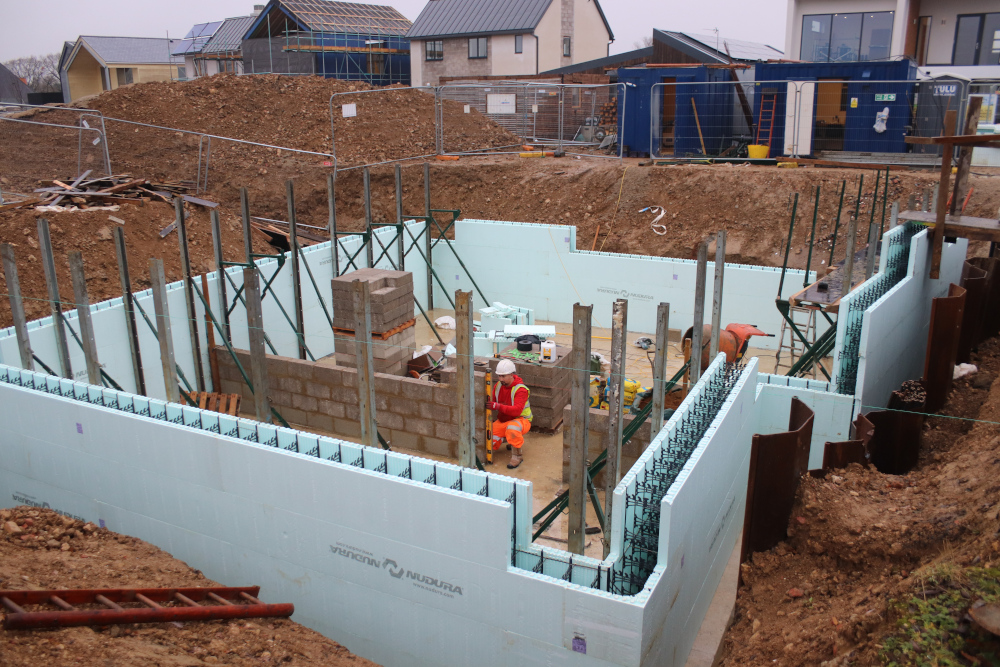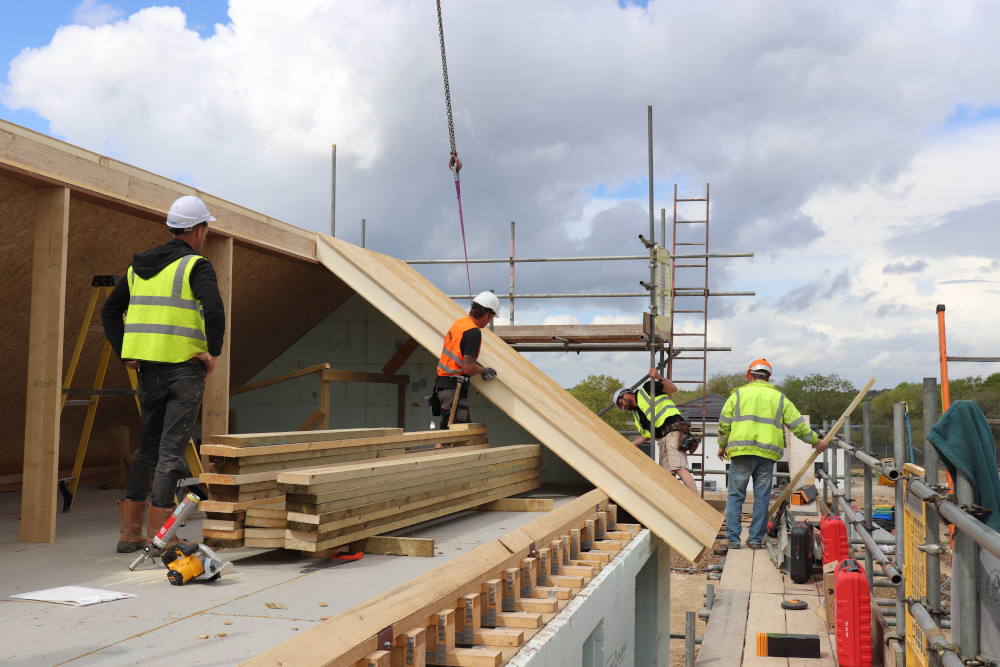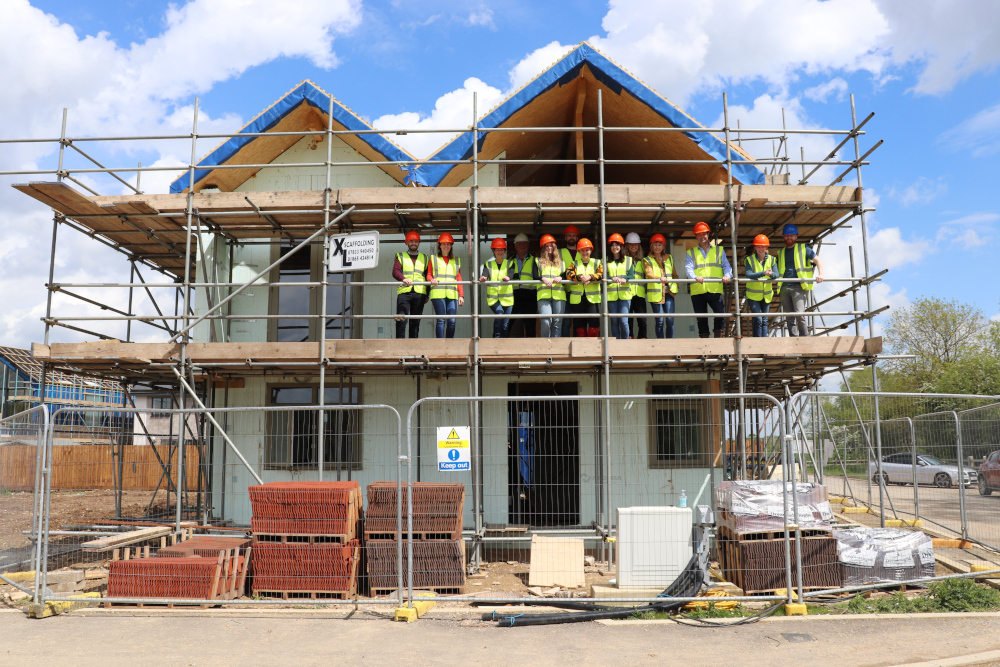Calderdale Council is selling several small sites for custom and self build, which offer potential for an enabling or custom build company to purchase, or a group of self builders to collectively buy. Three plots are on the market currently, until April 6th, and a fourth site is expected to be marketed shortly.
To make the process as easy as possible the sites have outline planning permission for homes, with suggested layouts available.
Building collectively as a group of self builders can offer economies of scale if planned well, and homeowners move in with a sense of community already in place, created through the process of building.
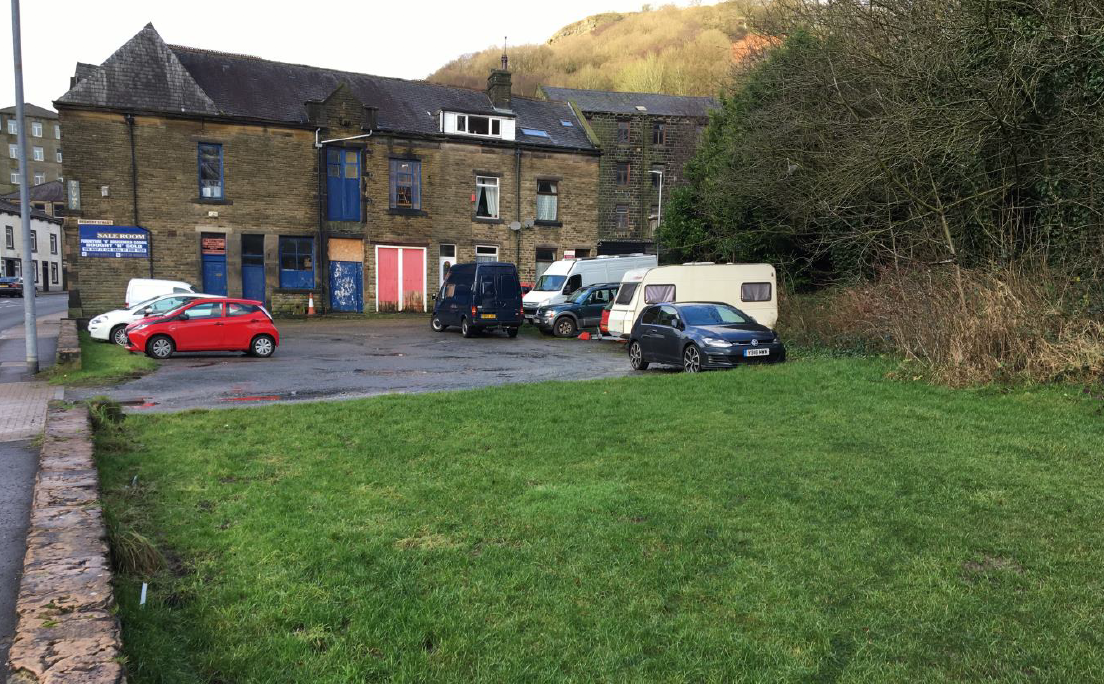
This 0.19 hectare site has outline planning permission for 4 dwellings, with a guide price of £125,000, on the site of a car park and vacant land.
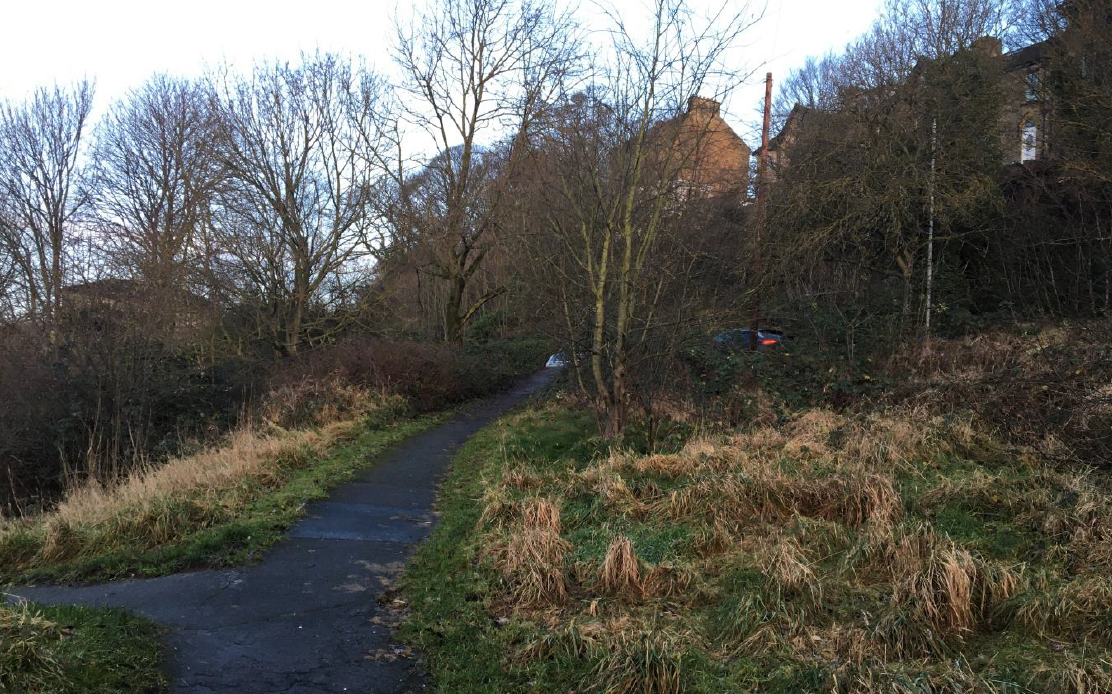
A 0.13 hectare piece of land with outline planning permission for 5 dwellings, which is on gently sloping vacant land. The guide price is £225,000.
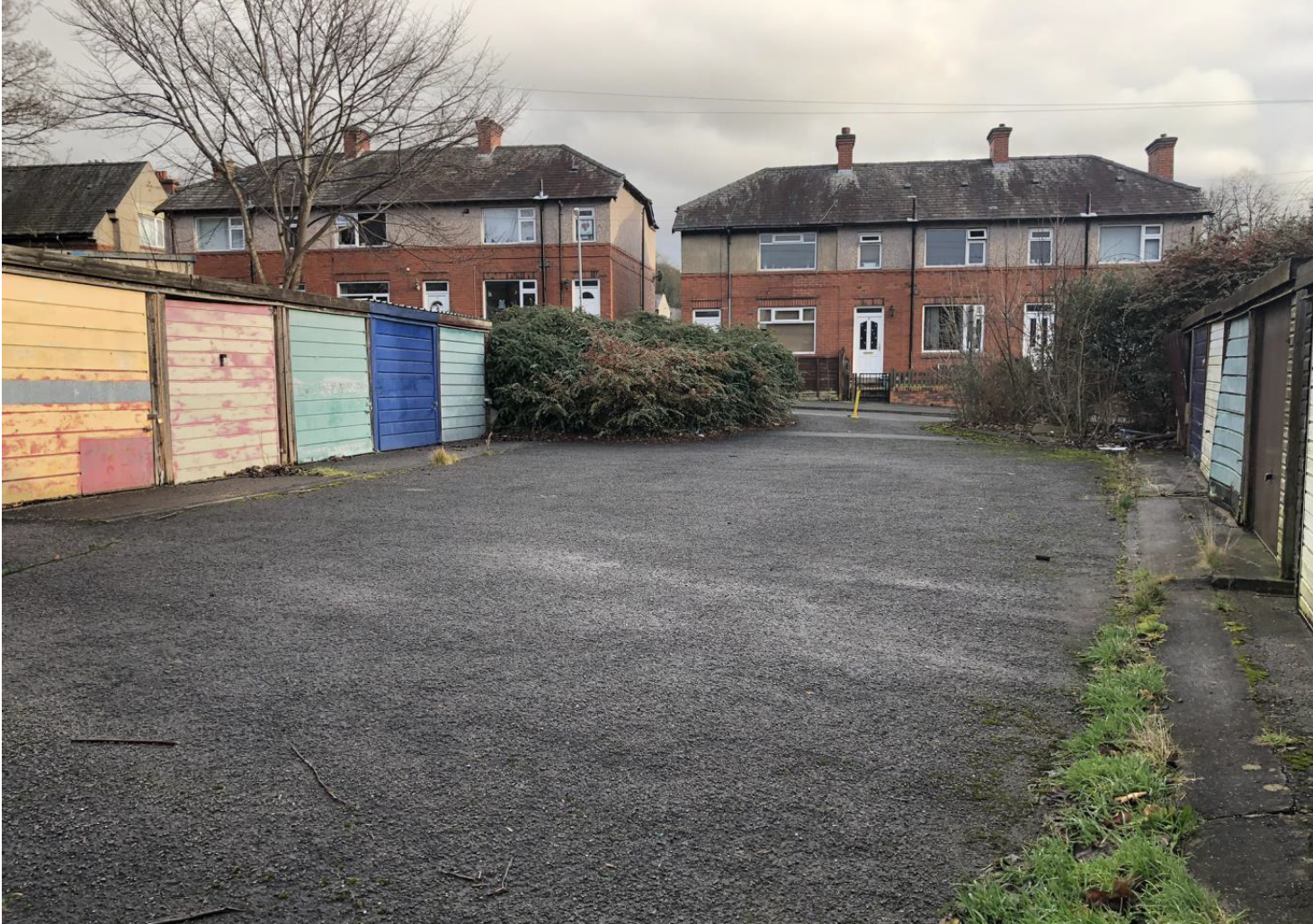
Set on a former garages site, this 0.06 hectare site has outline planning permission for 3 dwellings.
A new community build project supporting veterans to self build their own homes has started in Waterworks Lane, Leominster, Hereford. Stonewater Housing Association is working with the Community Self Build Agency (CSBA) and the Royal British Legion to create 19 new homes on a mixed development of two-bed flats and a range of houses, with the final homes available for affordable rent.
Many of the homes will be on offer to ex-service personnel, with the opportunity for up to nine veterans to be involved as builders on the scheme, where they will receive training and support. Veterans that help build the scheme will then be offered the option to rent one of the properties on completion, gaining a secure family home and a set of valuable and transferable skills.
Stonewater’s Waterworks Lane project illustrates how a range of organisations can work with local councils to provide much-needed new homes using alternative models, that can bring a range of sustainable goals to the table, including improving lives. The project will benefit from Homes England funding, part of a £224m award to the strategic Stonewater and Guiness Partnership that will create 4,500 homes by 2020.
Matthew Crucefix, Assistant Director of Development (West), said: “At Stonewater our commitment to providing everyone with a place they can call home is at the core of everything we do. In Herefordshire, there is a large armed forces presence and so there is a constant need for veteran accommodation.
We’re proud to lead the way alongside our community partners and show other organisations how important schemes like this are for the wider community. We hope to inspire others to take on similar projects in other areas of the country with similar challenges.”
Councillor Barry Durkin, at Herefordshire Council, said: “We are committed to supporting local veterans across Herefordshire and this new self-build partnership with Stonewater and Alabaré is a great opportunity to provide more affordable housing for veterans.
“This scheme not only provides much needed homes but will also provide the veterans with the training and skills needed to not only help build their own homes and but hopefully also gain future employment.”
Since being set up in the late 1980’s, Community Self Build Agency (CSBA) has helped hundreds of homeless or vulnerable people to have the opportunity to build their own home. From May 2019 CSBA has become part of Alabaré, which manages the day-to-day operations.
CSBA has completed over 178 self-build projects across the UK to date, developing in-excess of 1200 housing units to some of the most disadvantaged members of the local community. Their award winning schemes have included the Nelson Project in Plymouth – a 24-home site that included 12 self-build homes for the military veterans and 12 affordable homes.
Major Ken Hames, MBE, of Alabaré, said: “We’ve worked on similar projects in other parts of the country which, whilst challenging to get off the ground, really make a long-term difference.
“For the veterans fortunate enough to be part of the project they have a unique opportunity to gain the skills that could lead to long term employment, and the support to ultimately be able to live successful, independent lives once more. Together they will be creating a community that they can call home.”
The National Custom and Self Build Association (NaCSBA) has released new findings showing that, while the number of self builders signing up to the Right to Build has grown, some local authorities are using “dirty tricks” to make it harder for people to sign up to the Custom and Self Build registers.
The research show that 1,400 new registrations signed the registers in the last year, bringing the total number of people who have signed up to Right to Build to 55,000. However, that total number on the registers is actually lower, due to people being removed for the wrong reasons.
NaCSBA estimates that over 13,000 people build an owner-commissioned home annually, a number which is growing slowly, but which it feels is far below actual demand. According to the Building Society Association over half of us (53%) would like to self build one day.
On Right to Build Day, NaCSBA conducted a Freedom of Interest request to all English councils about the registers to see how many plots had been permissioned, against the numbers that signed up in the first year of the registers (a part year running from April to October 2016).
The results showed patterns of behaviour that are very concerning, and which NaCSBA will be sharing with Government.
While local authorities are required to promote their registers, NaCSBA believes that both a lack of marketing and a range of “dirty tricks” by a growing minority of local authorities is making it much harder for individuals and groups to sign up to, and remain on, the custom and self build registers.
The research showed three significant areas of questionable activity by some local planning authorities, with more and more councils repeating these as a way to get around managing their duties.
This restricts the opportunity for people to self-build, acting as a restrictor in the market that limits activity to those with enough money or equity to commission their own home – the very people who didn’t need the support of the legislation in the first place.
Constraints: Local authorities are imposing unreasonable constraints to signing the registers. This includes the charging of excessive fees to sign up to, and stay on, the registers. It also could be a local connection test that denies those living outside an authority the chance to build a home there – despite no such restrictions being in place in the wider market.
Miscounting: Local authorities must demonstrate how many self build plots they have granted permission for, to compare to people on the registers each year. Many councils are counting plots intended for building on by housing developers as potential self-build plots – even though they have were never marketed as such.
Removals: Some councils have removed many people from their registers for the wrong reasons, thereby reducing the number of plots that they must permission. Examples include restarting registers with new conditions, removing people as part of GDPR data protection exercises and so on.
The 30 October 2019 was the first date ever when local authorities had to demonstrate that they had ‘permissioned’ enough plots to reflect the demand evidenced by the registers, for those that signed up in the first year of the registers. Permissioned means the act of granting a self or custom build permission, and each year councils will have to match ‘permissions’ with the number of people that signed up. It doesn’t mean that the council has to create plots itself, nor does it have to contact people on the registers.
Despite permissioning sufficient plots being a requirement of the law, 8% of all authorities said they had not met their duties under the legislation and 37% failed to provide any response at all.
Of all the councils, only 45% claimed that they had met their legal duties, but this figure includes those councils that achieved this by using some, or all, of the limiting factors set out above.
NaCSBA is calling on local authorities to act within the letter and the spirit of the law and do better in future, especially as it estimates that at least 8,000 people have been wrongfully removed from registers.
Andrew Baddeley-Chappell, NaCSBA’s CEO said, “For the first time, local authorities have had to meet a statutory duty to help self builders access the plots that are needed. It is clear that overall they have come up short. In some cases, this is despite the hard work and best efforts of the authority, and we recognise those that have worked hard in this area.
“In too many cases however local authorities have spent scarce time and effort not on delivering plots but rather on seeking to avoid their obligations. This cannot continue, not least if we are to deliver homes in the volume and of the quality that this country needs.”
England has the lowest known rate of owner-commissioned homes among developed economies, and NaCSBA plans to work with government to improve this, giving more people the chance to live in a home designed to suit their needs.
NaCSBA still urges anyone wanting to build, including community-led groups, to sign up to the Right to Build as the registers remain a vital element in demonstrating to authorities how many people want to self build.
Image: Marmalade Lane Cohousing by TOWN.
We’re following the story of Anne and her husband as they work to build a home for their family of six boys, and also build a home for the grandparents on the same site. Crucially, they’re building what they could not afford to buy in their local area, and they’ve used the Right to Build to help them achieve it.

“You won’t get another fantastic opportunity like this at this price… it will be gone in days,” went the estate agent’s pitch. The fantastic opportunity was a tiny ex-local authority 2-up-2-down terraced house in an estate that would have been nice apart from the unkempt gardens, rubbish in the driveways and furniture in the backyards. The house had a loft extension, and it was only half a million pounds! I felt slightly sick at heart and the knot inside me tightened – I couldn’t quite bring myself to believe that this was the answer to our housing need.
We’d spent months looking for a new home. Our landlord of 10 years wanted his house back and in our search we decided to explore all options. Ideally we wanted to buy in the same area, so that we could stay close to our parents, not only to benefit from their help while the children were young but also to be useful to them as they grew older, and to remain in the community we had grown attached to and engaged in over two decades of marriage.
But buying in London suburbs is not easy, and with inflated house prices and a large family the options are extremely limited. What little that was suitable and in our price range was snapped up quickly.
A few weeks before I’d found a sweet ex-authority cottage in a nice setting that we could just about afford and I was determined to make an offer. But it was tiny, with two bedrooms but perhaps with the potential to extend into the loft. The downstairs floorspace was also small, but to me it didn’t matter as I thought we could make it work.
However, my husband Peter is an architect and he didn’t agree. His view was that the house couldn’t really cope with extending and although it would be ‘permitted’, that is allowable from a planning point of view, we would be the first in the block to do it and it would be unkind to the little house and out of place.
In reality, even when extended it would have been too tight for a family of six boys. I looked at Help to Buy but the homes within our price range were unsuitable apartments characterised as ‘luxury’, which in reality meant a few shiny taps and shiny floors, tiny box rooms and an enormous visitors’ toilet big enough to sleep two children.
Of course the fallback position was to rent again, but rents had also seriously inflated during the last 10 years we were in our home. Houses for rent were also obviously in short supply as they quickly disappeared off the market, despite huge upfront agency costs.
But there were other barriers. For us it was our children or rather the fact that we have six, and all boys. I would never say until I had to but one can hardly hide it and as soon as it came out the conversation would change. “Was I on benefits?”, “Was I 100% sure I wasn’t?”. Appointments to view houses were cancelled and on one occasion a holding deposit was given back because the landlady decided the kitchen was too small. I felt humiliated and never wanted to be in this position again.
Our prospects were bleak, but while standing in the tiny house looking at the dismal surroundings I had a change of heart and a spurt of determination. Peter had said that we should look at building our own house, and I had never taken it very seriously. I’d talked to a few friends and looked at a few auction sites but never really thought of it as a realistic option. But I decided to think again.
We lived in London, so where would we find the land? How could we afford to build? Most of our friends had said it was impossible. The obstacles and efforts had simply seemed too enormous. But now I was determined to give it a good try and at least if we did end up in the tiny house on the estate we would know that we had tried everything.
I wrote to an old friend who was a small builder/developer and asked for his advice. On the first day of the New Year of 2017 he wrote back, saying, “Very exciting to be looking at building your own home. It’s not easy finding a plot to be fair, but the Government seems to be more on your side than ever.” And he sent a link to the government press release ‘Boost for aspiring self-builders’. This was an encouraging and rather exciting moment.
The government was trying to help ordinary families build homes in the boroughs they wanted to live in. Councils were required to launch Self Build Registers for people to express an interest, and the Housing and Planning Act 2016 required local authorities to ensure that they had granted ‘permission’ for enough sufficient shovel-ready plots to match the local demand on their register.
What did this mean in practice? Could the Council really provide us with a plot? I somehow doubted it but I was determined to find out, so I signed our local Enfield self build register and requested an appointment with our local MP to find out just what the legislation intended.
Read the other parts of the Self Build Family Build Blog.
Part One: Deciding to Self Build, the Turning Point
Part Two: Looking for Land in London
Part Three: The Land Value Idea
Part Four: A Small Matter of Access
Part Five: The Mystery of the Road Unravelled
Part Seven: Best Consideration Pursuing our Community Building Idea
Part Eight: Calling on Higher Parts
For thirty years Build It magazine has been helping dreamers turn their plans into homes, guiding and inspiring them through the process for three decades. Now part of a group of magazines supporting self builders, Build It was the first dedicated title for people wanting to build, spotting a niche in a growing market.
In between getting ready for their two winter shows – Built It Live South East (9 Feb) and North West (22-23 Feb), the team at Build It have been enjoying a trip down memory lane finding out how the industry – and our tastes – have evolved over the years.
We’re glad to report that since then the sector has evolved considerably – with far more finance and mortgage products for you to choose from. But most noticeably, the serviced plots market, which can be both self build although they are typically custom build, has transformed the landscape.
However, despite this – finding that perfect plot is still the element that most self builders struggle the most with. Some things, it would seem, are slower to change, even if there are far more plots now on the market!
The best new homes of 2019 have been awarded in the Home of the Year awards by Homebuilding and Renovating and the Daily Telegraph, including Self Builds, extensions, conversions and renovations.
The awards have been running for nearly thirty years now, meaning that the judges have a good idea of what’s needed to elevate the entries into the winning criteria.
The overall winner of the Home of the Year & Best Contemporary Self Build went to Bunch Lane House, which had a build cost of £425,000 by Architect Vint & Smith Architecture + Design, pictured.
The judges felt that the house was a great design crafted for a great value of £1,500/m2, created by owner and architect Tavia and Richard Vint through the clever use of cost effective materials.

Best Contemporary-Style Self Build — sponsored by Folding Doors 2 U
Best Traditional-Style Self Build — sponsored by Rationel Windows & Doors
Best Extension — sponsored by ABC+ Warranty
Best Renovation — sponsored by Yeoman Rainguard
Best Conversion — sponsored by Etex (Exteriors) UK, providers of Eternit Slates
Best Eco Home — sponsored by Ecology Building Society
Home of the Year — sponsored by Icynene
Spirit of Self Build — sponsored by Hörmann
Readers’ Choice Award — sponsored by Selfbuild & Contract Floors
Check out all the winners on Homebuilding & Renovating’s website.
Credit: Homebuilding & Renovating/Simon Maxwell
What makes a good Christmas present? Socks that sit in a draw? A bottle of fizz that’s gone in an evening? Well why not make a year out of Christmas for the Self Builder in your life and give them a subscription to their favourite homes magazine for Self Builders.
NaCSBA knows that educating yourself is the surest way to get the most out of you build, and magazines are a great way to do this, from the latest products to avoiding pitfalls and saving money. The build titles are packed with seriously helpful features and case studies to show you what you could achieve – and usually how much a look actually costs – invaluable!

Don’t miss this exclusive offer brought to you buy Self Build Portal! Subscribe to Build It magazine for Christmas and receive 12 issues of for just £19.99. Don’t delay, this offer lasts until 21st December! Plus, you’ll get two free tickets to a Build It Live, worth £24! Build It’s Shows are Kent (8-9 Feb) North West (22-23 Feb) and South Central (6-7 June).
Regular Cover Price is £4.99.

Check out Self Build & Designs brilliant Christmas trial offer of 5 issues for £5, following on at £36 for the next twelve months by Direct Debit, especially for Self Build Portal users. Subscribers get a FREE pair of show tickets to either the Peterborough Show (7-8 March) or the Exeter show (12-13 September)
Regular Cover Price is £4.99.

Grab a subscription for Homebuilding & Renovating and start planning your own project, for £7.50 for three months or for £29,99 a year – all by Direct Debit, plus, plus claim two free tickets to all eight Homebuilding & Renovating Shows, worth a combined £216! Shows are: Farnborough (18-19 Jan), NEC (26-29 March), Glasgow (30-31 May), Surrey (27-28 June), London (25-27 Sept), Edinburgh (17-18 Oct), Harrogate (6-8 Nov) and Somerset (21-22 Nov).
Regular Cover Price is £4.65.

Follow everyone’s favourite inspo programme and keep up with latest design trends with a subscription to Grand Design magazine for £2.20 a month based on a year’s subscription, paid for month-by-month.
Regular Cover Price is £4.40.

If a conversion or renovation is more your thing, or you just love traditional interiors, pick up a subscription to Period Living for £7.50 for three months by Direct Debit, or £29.99 for a whole year.
Regular Cover Price is £3.99.

For home lovers with modern tastes check our Real Homes, for £7.50 for three months by Direct Debit, or £29.99 for a whole year.
Regular Cover Price is £4.45.
House Lessans in Northern Ireland’s County Down beat a host of homes to be awarded House of the Year by the Royal Institute of British Architects (RIBA), announced in a special four-episode programme of Channel 4’s Grand Designs.
The home, an unassuming yet elegant barn-style house, was built for a very realistic budget of £335,000 on the family’s farm in the rolling Co Down landscape. Scooping the prize demonstrates that quality and design are achievable on a modest budget – good news for any would-be Self Builder, as presenter Kevin McCloud commented that it was built at half the cost of an average but quality Self Build.
The home was in the Down to Earth category of the show, and was designed by Kieran McGonigle of architectural practice McGonigle McGrath. Its L-shaped design utilises a limited colour palette and affordable budget materials, such as concrete bricks, to create a show-stopping house, that offers a new way to build in the countryside.

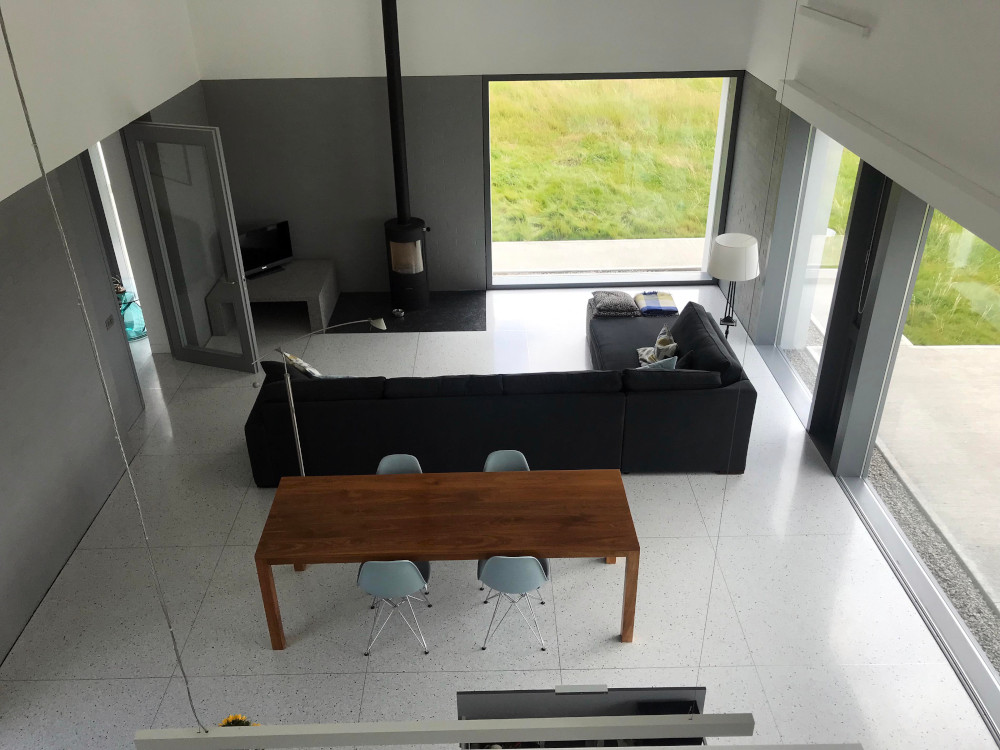

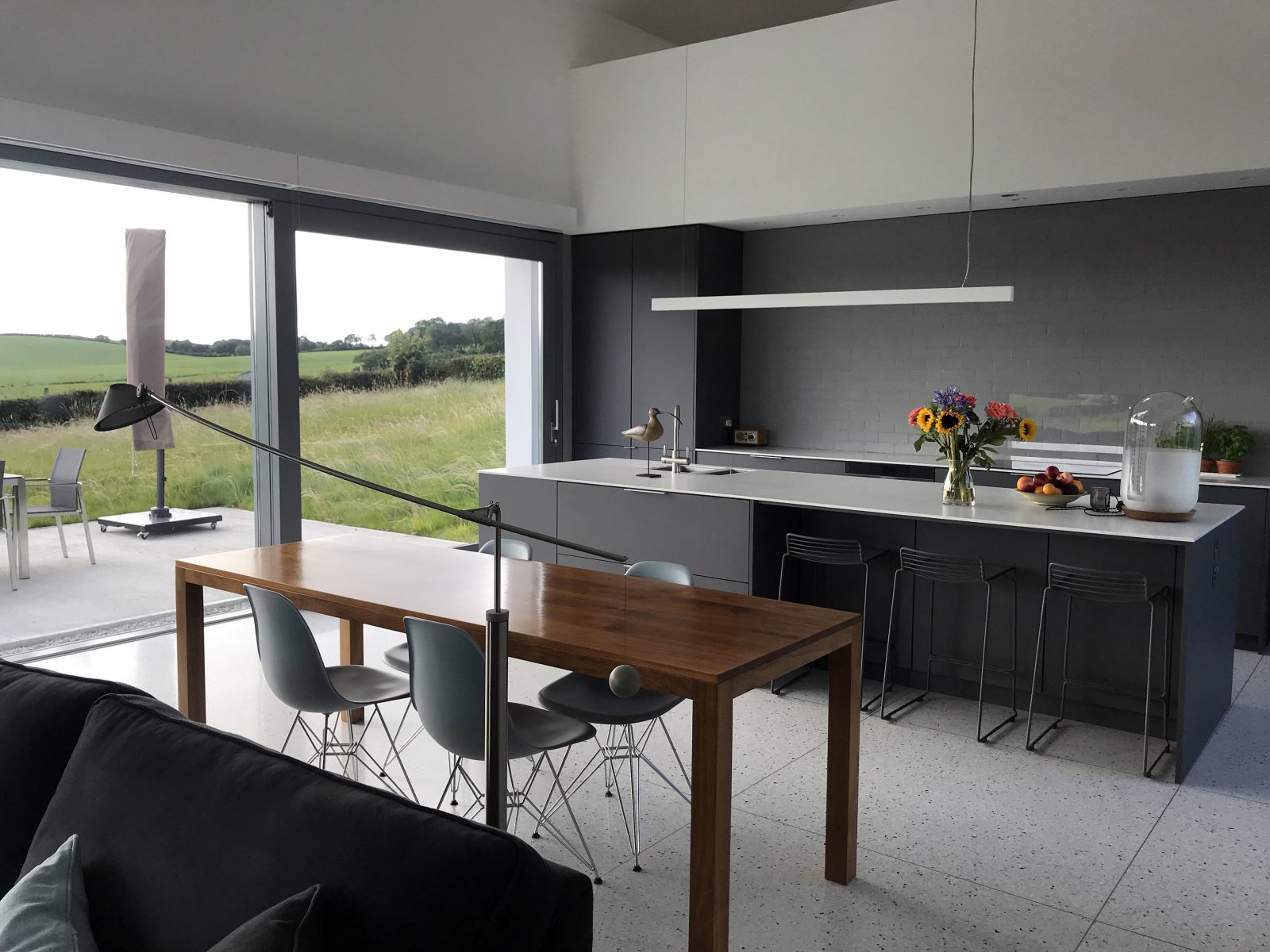
The owners of the property, Sylvia and Michael, wanted to create a paired-down home large enough for visiting grown children to stay in on the remains of the existing small farmstead. The concrete blockwork and and zinc roofs help the building bed into its rural landscape, with the L-shape creating an intimate courtyard space, and double-height ceilings bringing airiness to the design.
RIBA President, Alan Jones, said: “House Lessans demonstrates that life enhancing architecture does not have to cost the earth. Executed with incredible clarity and restraint, McGonigle McGrath have used simple and cheap materials to create a truly bespoke home that resonates with its owners and its context. Even with the tightest of budgets, House Lessans shows that a dream home, designed by a talented architect, can be a reality.”
An exciting new opportunity has come to market for anyone wanting to Custom Build in Norfolk, with a 10-plot custom build development in the coastal village of Ingoldisthorpe.
Custom build enabler LivedIN has worked with the landowner to create a legacy community for the village, with homes designed by architects Project Orange, and landscape architects AREA.
Being Custom Build, the plots are serviced, with the infrastructure undertaken by LivedIN, and buyers manage the build process themselves. Although pre-designed, purchasers are able to customise their home from a range of choices, both externally and internally. The plots for the houses, which range between 3-5 bedroom, are currently available via Sowerbys, starting from £150,000 for the plot with the smallest house of 136 sqm.
Custom Build approaches vary site-by-site, but for buyers at Ingoldisthorpe the following process has been set out:
This route to home ownership offers choice and flexibility that’s not typically available in the open market, but takes a lot of the legwork out of the process of commissioning your own home from scratch. By pre-designing the houses and allowing some flexibility, homeowners get the best of both worlds. It also means that the development has been designed as a whole, fitting the bespoke contemporary designs into the local rural setting.
Part of the ambition in creating a legacy community is about enhancing the village setting, and the houses sit around a new village green with an extended farm pond, creating a new heart for the community.

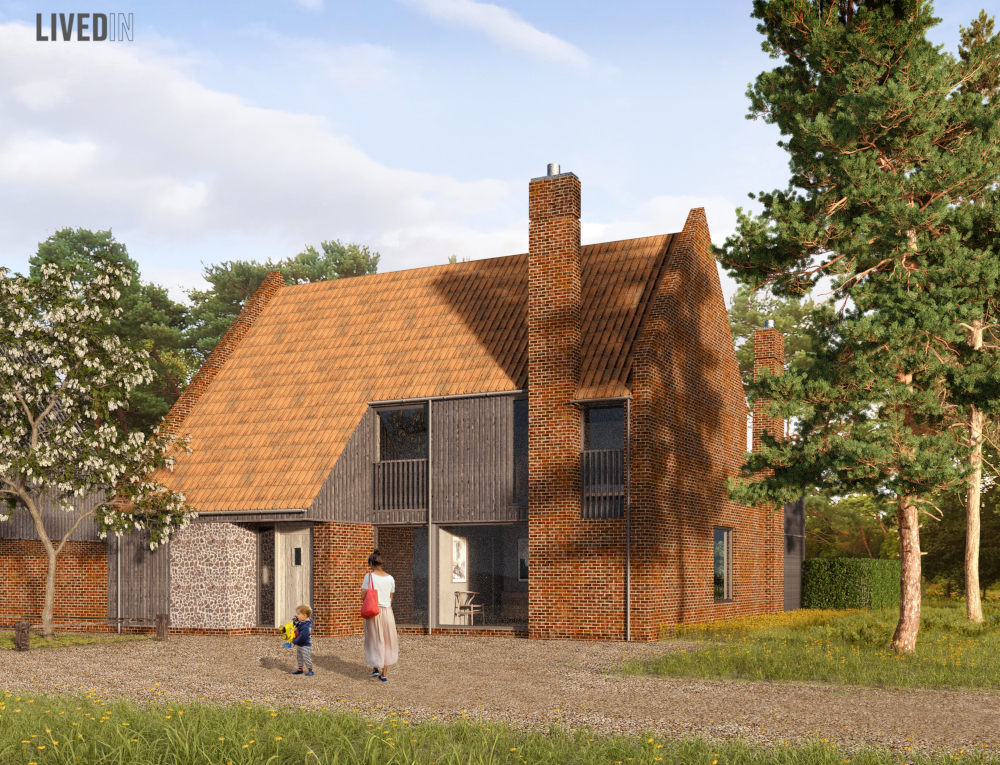
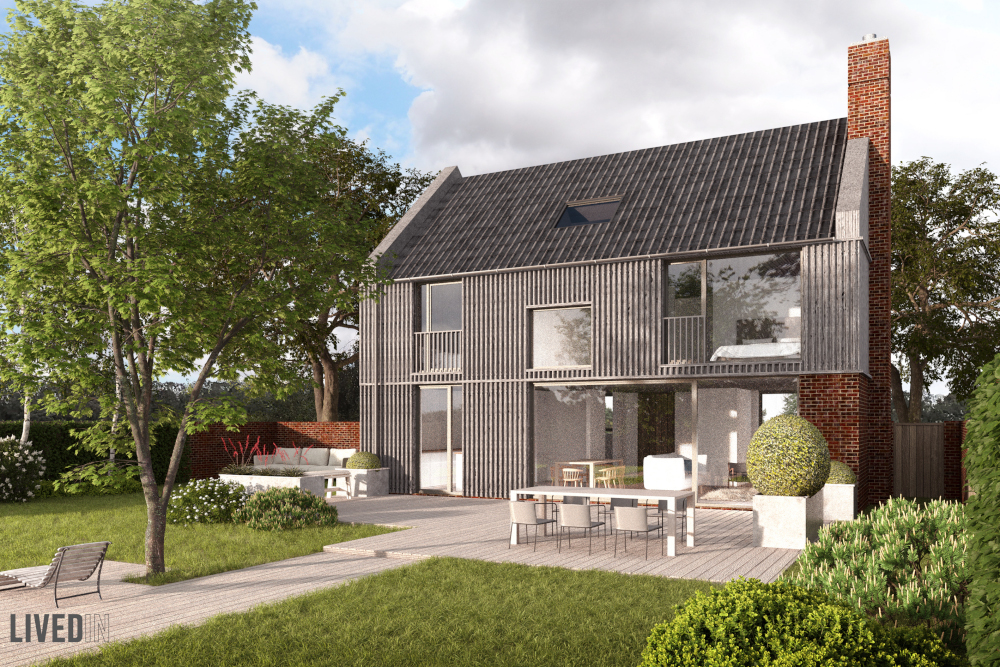

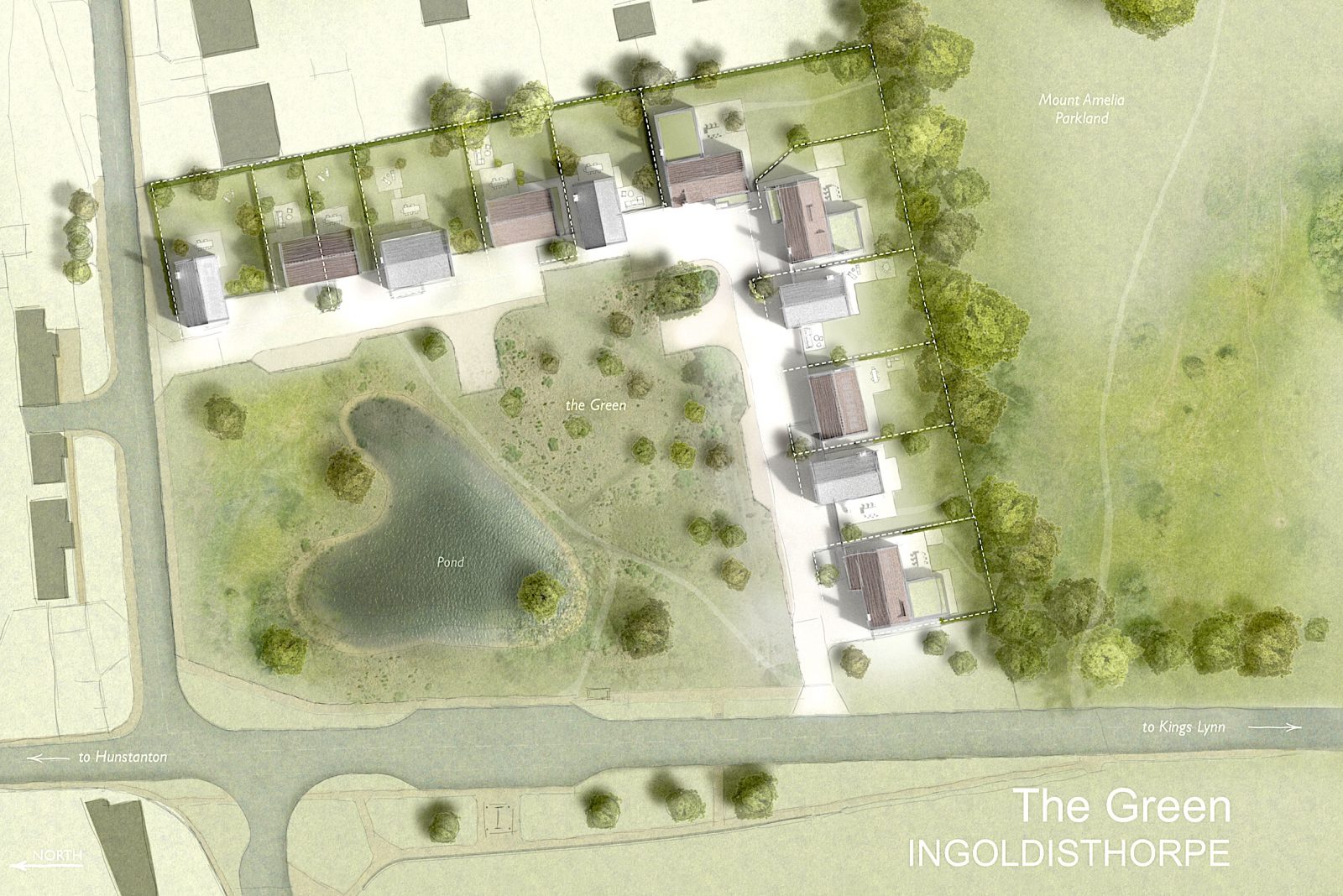
Charlie de Bono, Director at LivedIN, said, “Custom Build is about giving homeowners more choice – giving control back to those who know best how their house should look and work. And we are determined that choice should also go hand in hand with good design.
“Carefully considered designs ensure that the individual houses are an excellent fit, not just for their owners but also that they work well with their neighbours and local communities. The architects have expertly blended an imaginative contemporary design with an understanding of the local vernacular and traditional features. The resulting designs can be customised to individual preferences within a common style that tie the houses together into a cohesive whole.”
On Right to Build Day on 30 October, Build It’s Self Build Education House was opened at Graven Hill – the UK’s largest Custom and Self Build site. Officially opened by Richard Bacon, MP and Right to Build Task Force Ambassador, the house is a permanent resource created by Build It magazine for anyone planning their own project.
Build It’s Self Build Education House has been created in partnership with Graven Hill, which will eventually have 1,900 homes onsite, as a unique resource that gives aspiring builders an insight into the process of creating your own home, and importantly, linking the decision made in the journey to financial consideration. This helps illustrate that self builders can create an amazing home for a realistic budget on a modest plot.
As visitors explore the Education House, informational graphics guide them through the magazine’s Self Build journey and the practical choices they can expect to face on their own projects – regardless of where they are building. Visitors can also see cut-outs of key structural details and pick up a complete handbook taking them step-by-step through the process of designing and building the Education House, together with a free copy of Build It magazine.
NaCSBA recognises that one of the most significant barriers to people fulfilling their dreams of Self Building is a lack of knowledge, with NaCSBA’s Self Build Portal website (www.selfbuildportal.org.uk) an important source of objective advice. Consequently, it welcomes the opening of the Self Build Education House as a valuable resource for anyone interested in Self Building, helping them balance decisions with budgets to get the best possible outcome.
Chris Bates, Editor of Build It said: “Build It’s Self Build Education House seeks to inspire the next generation of Self Builders and demystify the process of creating your own individual home. The Education House empowers people to access the Self Build route by helping them understand their design, build and fit-out choices and equipping them with the knowledge they need to achieve a better quality, better designed and better value-for-money home.”

